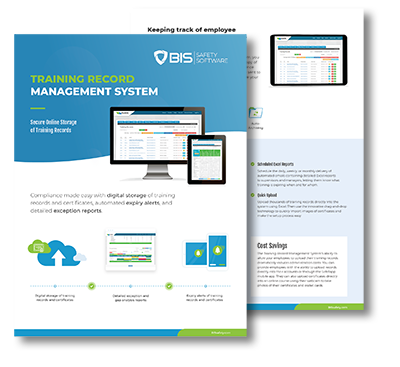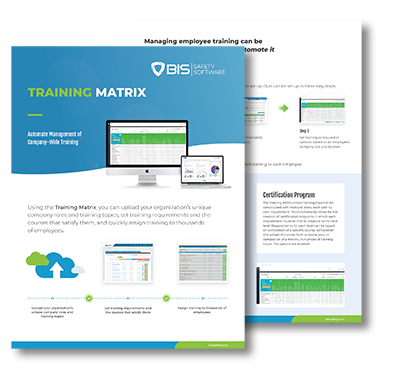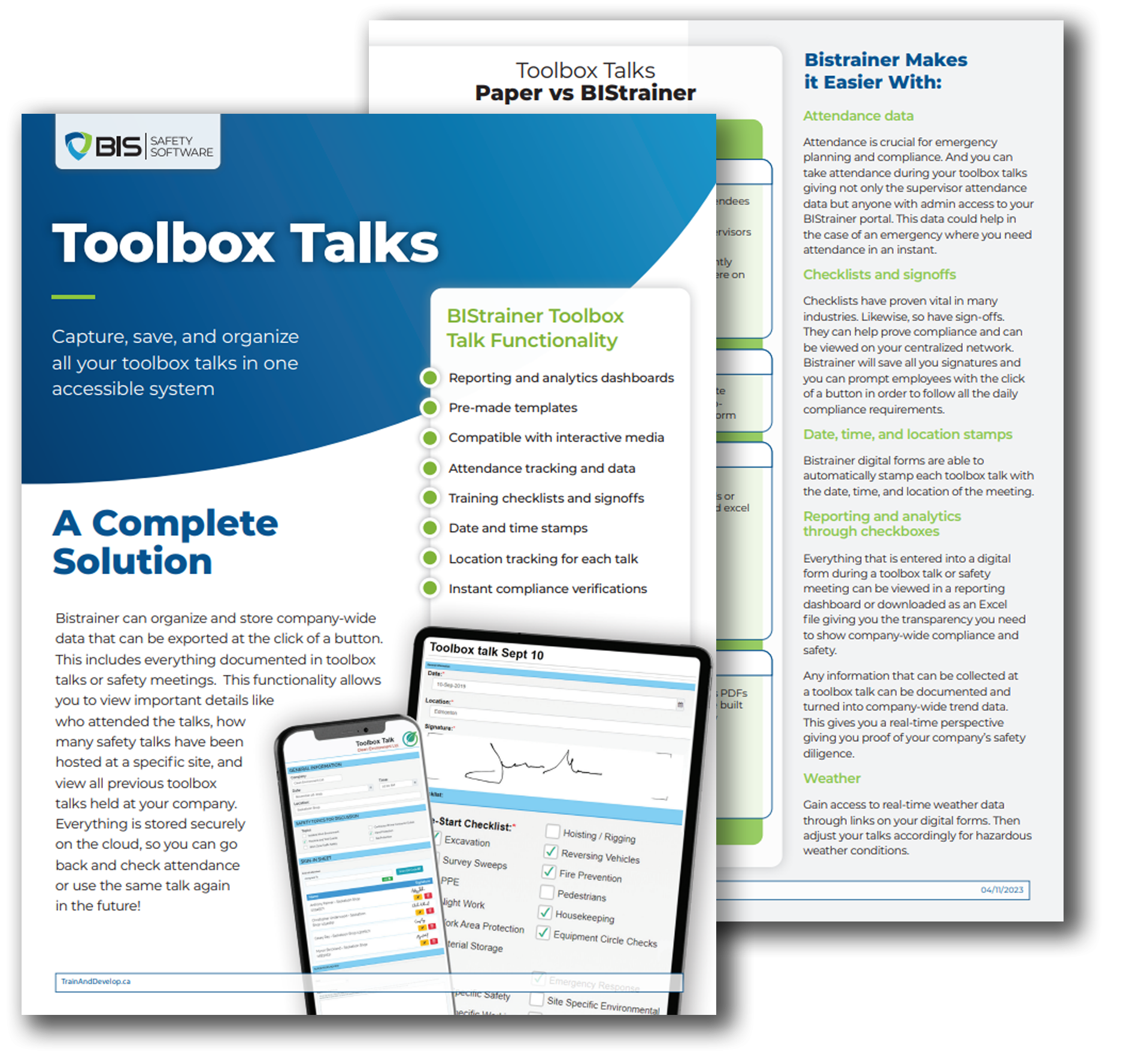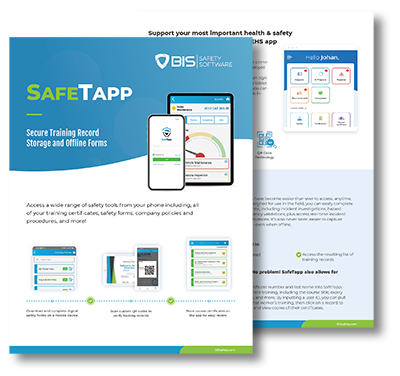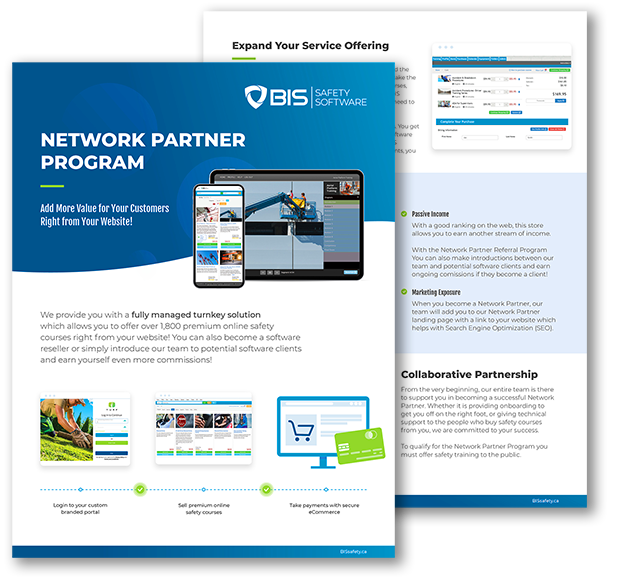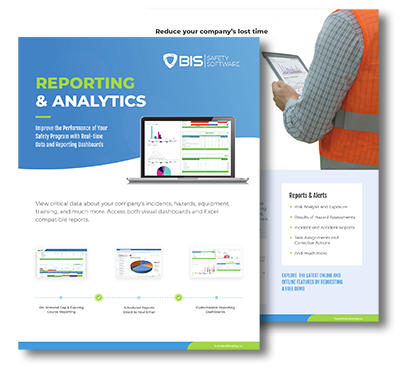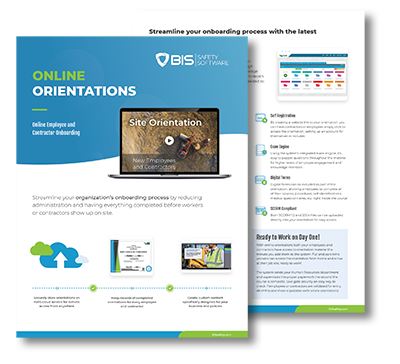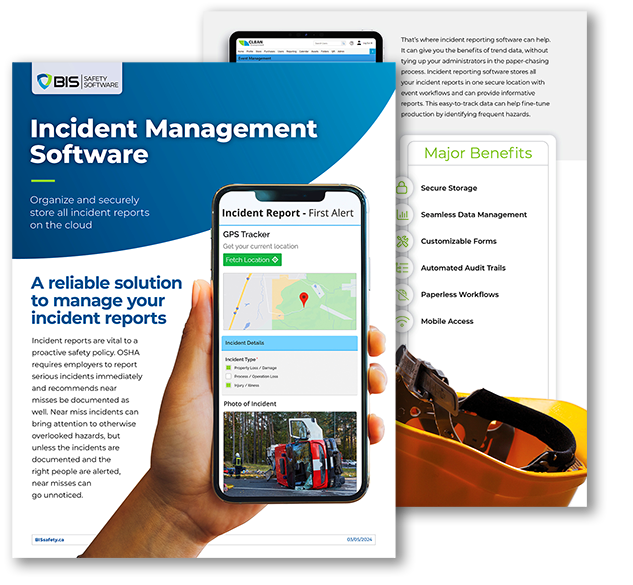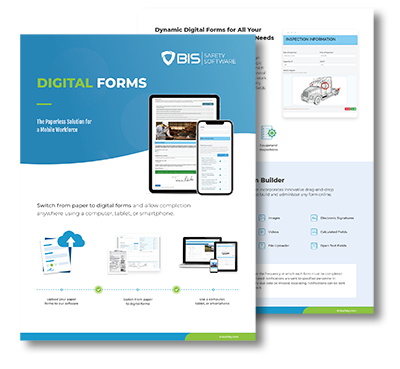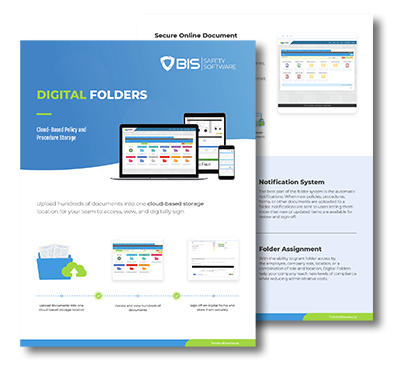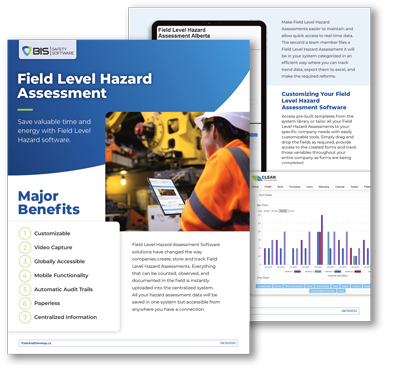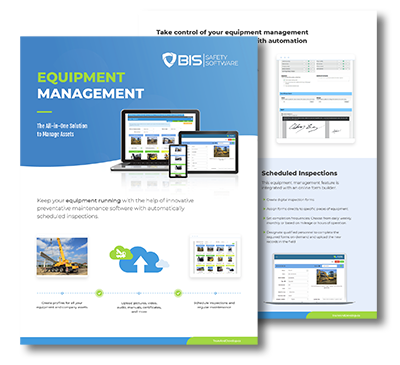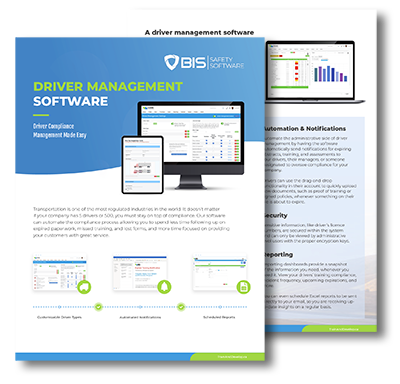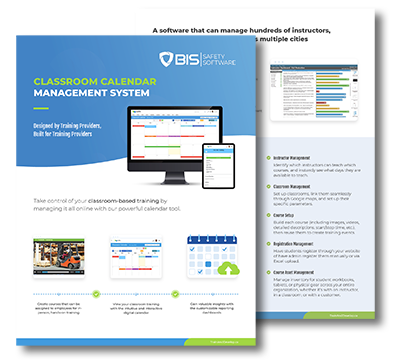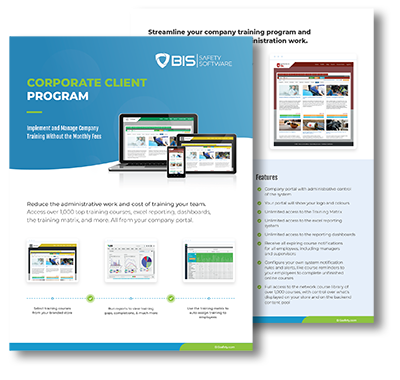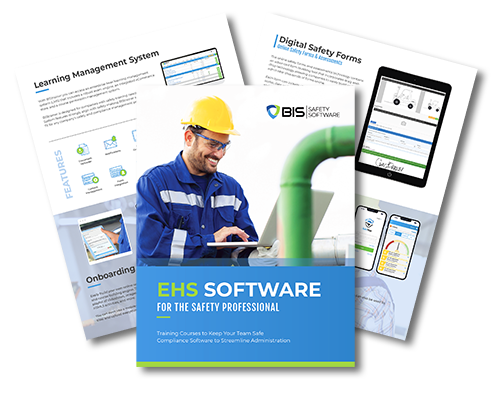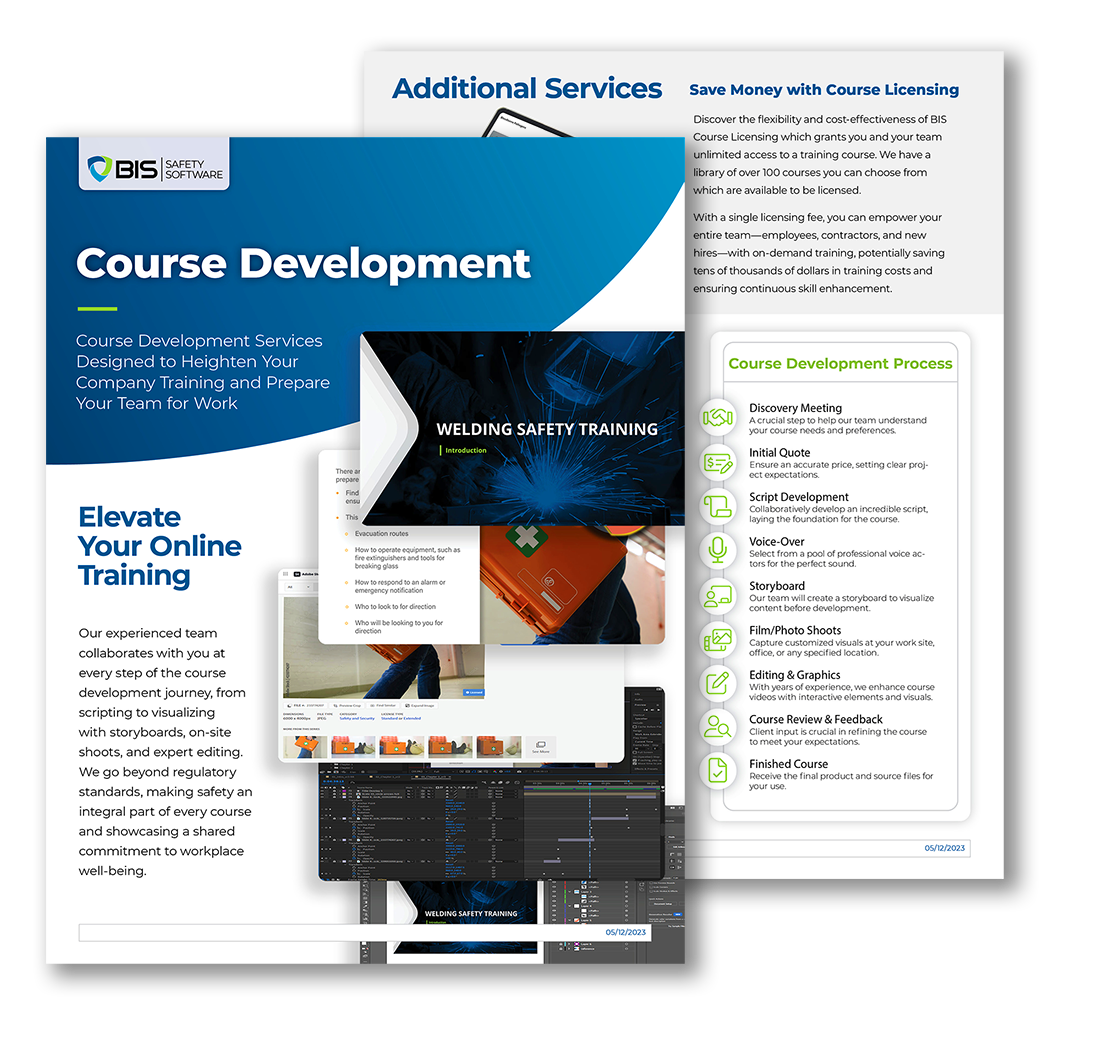Pain Is a Warning

Home Pain Is a Warning Why Ignoring Injuries Leads to Bigger Problems Silence isn’t golden! March 28, 2025 By Divyanshu Jain Facebook Twitter LinkedIn Don’t tough it out! Too many workers push through pain instead of speaking up. They strain sore muscles, ignore small cuts, and brush off dizziness. They don’t want to look weak, slow down the team, or risk their job. But ignoring pain doesn’t make it go away—it makes it worse. Minor injuries turn into major ones. Small strains lead to lifelong damage. When workplaces push workers to ignore pain, small injuries turn into chronic ones. Burnout rises. Safety slips behind speed and output. Why Workers Stay Silent ▸ Fear of JudgmentNo one wants to be seen as weak or unable to handle the job. Many workers believe speaking up will make them a target for ridicule or resentment.▸ Job SecuritySome workers worry that reporting an injury could cost them hours or their position. If a workplace treats injuries as a sign of unreliability, workers will hide them.▸ Team PressureIf everyone else is pushing through, it’s hard to be the one who speaks up. Workers don’t want to feel like they’re letting the crew down.▸ Lack of AwarenessMany don’t realize how serious an injury can become if left untreated. What feels like a small strain today could lead to permanent damage months or years later. ▸ Workplace Culture When toughness matters more than safety, workers see reporting pain as weakness, not a smart choice. The Real Cost of Pushing Through Pain A sore wrist today can turn into chronic tendonitis. A minor back strain can lead to a herniated disc. Untreated dizziness can cause a fall, leading to fractures or worse. Repetitive motion injuries, if ignored, can force workers out of their jobs entirely. When workers ignore pain, they risk more than discomfort. They risk long-term disability, lost wages, and reduced quality of life. Pain slows reactions, causes mistakes, and raises the risk of serious accidents. More injuries mean lost time, higher costs, and lower productivity for employers. When injuries pile up, morale drops, and turnover increases. Ignoring pain doesn’t just harm workers—it weakens the whole team. How to Change the Culture 1. Encourage Reporting Make it clear that speaking up about pain isn’t weakness— it’s smart. The sooner an issue is addressed, the less damage it does. Employers should make reporting concerns easy and judgment-free. Workers need to know they can speak up without fear. 2. Train Supervisors to Listen If workers report pain and get brushed off, they won’t speak up next time. Leaders should take concerns seriously and act fast. A supervisor’s attitude toward safety sets the tone for the entire team. 3. Provide Proper Equipment The right tools, supportive footwear, and ergonomic solutions prevent unnecessary strain. Investing in high-quality safety gear reduces long-term injury risks. 4. Promote Early Intervention Stretching, rest breaks, and quick treatment stop small aches from turning into serious injuries. Encouraging movement and proper lifting techniques can prevent chronic conditions before they start. 5. Educate Workers on Injury Progression Many workers don’t report pain because they don’t realize how quickly a small injury can escalate. Training should include real-world examples of ignored injuries turning into serious conditions. 6. Lead By Example If supervisors push through pain, workers will too. A strong safety culture starts at the top. Leadership should demonstrate safe habits and encourage self-care without stigma. 7. Create a Supportive Environment Recognize and reward workers who take the right steps when dealing with injuries. Reinforce that prioritizing health is the responsible thing to do. Final Thought: Strength Is Speaking Up Real toughness isn’t about ignoring pain—it’s about knowing when to stop, recover, and protect your future. A smart worker doesn’t push through injury. They recognize risk, report issues, and take action before it’s too late. When workplaces support early intervention, workers stay stronger, safer, and more productive in the long run. Work smart. Stay strong. Speak up. BIS Social Media Stay connected with BIS Safety Software for the latest in safety innovations, training tools, industry insights, and company news. Click any icon below to follow us and keep BIS updates just a tap away. Facebook Instagram Linkedin Youtube Related Articles All Posts 360 Immersive Alberta safety courses awareness BambooHR integration biometric sensors BIS Safety Software black holes chemical chronic injuries community safety programs Compliance compliance courses compliance tools compliance vs protection Construction advocacy Construction education Construction industry construction safety training crane customized training daily trip inspection Danny Sellers data-driven safety digital forms driver file management driver training early intervention EHS Einstein emergency preparedness emergency supplies employee health employee safety employee training ergonomics exoskeletons fall protection field safety field safety services fire prevention first aid kit first week on the job fleet management gravitational waves hands-on training hazard communication hazard prevention heavy equipment safety high voltage systems HR automation HR software incident data incident reporting industrial safety injury prevention injury reporting injury response internal audits Jennifer Lastra job site hazards job site risks job site safety Jody Young KBR Safety Training Leadership leadership accountability LIGO LMS lone workers mental health at work MI Safety new workers Northern BC NRCA NSC Standard 13 occupational health occupational safety oil and gas safety onboarding safety Online safety training OSHA compliance OSHA standards overhead crane courses pain awareness physics careers pipeline safety PPE PPE enforcement pre-trip inspection pretrip inspection Professional development psychological safety risk management road safety Robin Postnikoff safety safety advice safety article safety best practices safety compliance safety culture safety innovation safety insights safety inspection safety leadership safety management safety management system safety myths safety systems safety technology safety theater safety tips safety training smart helmets space science supervisor training Total Recordable Injury Formula training training courses training matrix training record management transportation vehicle safety Virtual Reality VR Technology wearable technology WHMIS women in leadership work-alone training worker accountability worker protection worker safety workforce management workforce training workplace best practices workplace certification workplace hazards workplace health workplace injury prevention workplace risk management
Pipeline Construction Safety Training
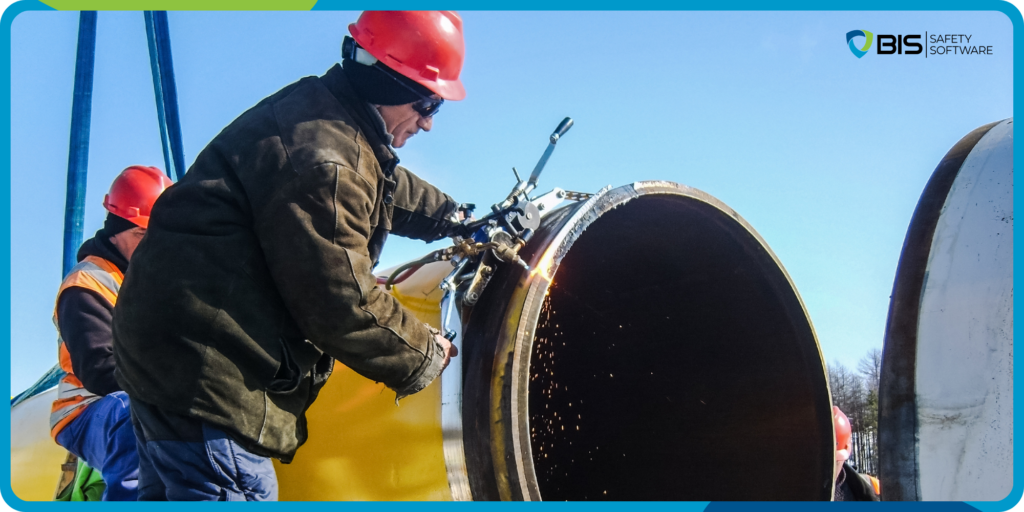
Home Pipeline Construction Safety Training Essential Knowledge for Workers Enroll today! March 20, 2025 By Divyanshu Jain Pipeline construction plays a vital role in transporting oil and natural gas efficiently and safely. However, building and maintaining these pipelines comes with significant hazards that can put workers, the environment, and the surrounding communities at risk. Proper training ensures that every worker understands the best safety practices, potential hazards, and industry regulations. The Pipeline Construction Safety Training (PCST) course provides comprehensive knowledge on hazard identification, risk mitigation, and safe construction techniques. This training ensures workers can perform their jobs safely and effectively. Upon completion, participants receive a QR Code-enabled certificate for quick verification of their credentials. Why Pipeline Construction Safety Training Matters Pipeline construction involves heavy machinery, hazardous materials, and complex processes. Without the proper training, workers face risks such as falls, equipment-related injuries, chemical exposure, and fire hazards. A well-trained workforce helps to: ✔ Prevent accidents and injuries on-site ✔ Ensure compliance with safety regulations ✔ Reduce costly delays caused by safety violations ✔ Protect the environment from contamination risks ✔ Improve communication and teamwork among workers What’s Covered in Pipeline Construction Safety Training? 1. Understanding Pipeline Construction Processes ✔ Overview of pipeline construction steps ✔ Surveying, trenching, and laying pipelines ✔ Welding, coating, and non-destructive testing ✔ Backfilling, pressure testing, and reclamation 2. Recognizing Common Hazards ✔ Working around heavy equipment and vehicles ✔ Uneven terrain and trench-related risks ✔ Exposure to hazardous chemicals and gases ✔ Lockout/Tagout (LOTO) procedures for hazardous energy ✔ Overhead power line safety 3. Fire Prevention and Emergency Preparedness ✔ Fire hazard identification and prevention strategies ✔ Fire extinguisher types and proper use (PASS method) ✔ Emergency response procedures for spills and incidents ✔ Safe handling of flammable materials 4. Personal Protective Equipment (PPE) and Safe Practices ✔ Selecting and using the right PPE for pipeline work ✔ Importance of eye, hand, foot, and respiratory protection ✔ Best practices for avoiding workplace injuries ✔ Safety protocols for working in remote locations Get Certified Today! Pipeline construction requires specialized knowledge and adherence to strict safety standards. The Pipeline Construction Safety Training (PCST) course provides workers with the essential skills to work safely, prevent accidents, and ensure compliance with industry regulations. Participants will receive a QR Code-enabled certificate for verification. Enhance your safety knowledge—[Enroll in Pipeline Construction Safety Training Today]! BIS Social Media Follow BIS Safety Software for industry-leading safety updates, training solutions, and more. Hover over each icon for quick access to follow, share, or explore our other channels. Related Articles All Posts 360 Immersive Alberta safety courses awareness BambooHR integration biometric sensors BIS Safety Software black holes chemical chronic injuries community safety programs Compliance compliance courses compliance tools compliance vs protection Construction advocacy Construction education Construction industry construction safety training crane customized training daily trip inspection Danny Sellers data-driven safety digital forms driver file management driver training early intervention EHS Einstein emergency preparedness emergency supplies employee health employee safety employee training ergonomics exoskeletons fall protection field safety field safety services fire prevention first aid kit first week on the job fleet management gravitational waves hands-on training hazard communication hazard prevention heavy equipment safety high voltage systems HR automation HR software incident data incident reporting industrial safety injury prevention injury reporting injury response internal audits Jennifer Lastra job site hazards job site risks job site safety Jody Young KBR Safety Training Leadership leadership accountability LIGO LMS lone workers mental health at work MI Safety new workers Northern BC NRCA NSC Standard 13 occupational health occupational safety oil and gas safety onboarding safety Online safety training OSHA compliance OSHA standards overhead crane courses pain awareness physics careers pipeline safety PPE PPE enforcement pre-trip inspection pretrip inspection Professional development psychological safety risk management road safety Robin Postnikoff safety safety advice safety article safety best practices safety compliance safety culture safety innovation safety insights safety inspection safety leadership safety management safety management system safety myths safety systems safety technology safety theater safety tips safety training smart helmets space science supervisor training Total Recordable Injury Formula training training courses training matrix training record management transportation vehicle safety Virtual Reality VR Technology wearable technology WHMIS women in leadership work-alone training worker accountability worker protection worker safety workforce management workforce training workplace best practices workplace certification workplace hazards workplace health workplace injury prevention workplace risk management Workplace safety workplace wellness WSPS The PPE Excuse: April 1, 2025 Home The PPE Excuse: Why Workers Skip It and How to Change That Lastra talks psychology, VR, and AI in… Read More Pain Is a Warning March 28, 2025 Home Pain Is a Warning Why Ignoring Injuries Leads to Bigger Problems Lastra talks psychology, VR, and AI in workplace… Read More The Problem with Safety? We Made it Boring. March 27, 2025 Home The Problem with Safety? We Made It Boring. We Made It Boring Lastra talks psychology, VR, and AI in… Read More
Daily Trip Inspection Training

Home Daily Trip Inspection Training Ensuring Vehicle Safety Before Every Drive Enroll today! March 20, 2025 By Divyanshu Jain Daily trip inspections are a critical safety measure for commercial drivers and fleet operators. A thorough inspection helps identify potential issues before they lead to accidents, vehicle breakdowns, or regulatory violations. Under NSC Standard 13, drivers must perform these inspections at least every 24 hours, ensuring their vehicles are in safe operating condition. The Daily Trip Inspection Training course equips drivers with the knowledge needed to conduct thorough pre-trip inspections, recognize defects, and comply with regulatory standards. Upon completion, participants receive a QR Code-enabled certificate for instant verification. Why Daily Trip Inspections Matter Routine inspections are required by law and play a crucial role in preventing accidents. A proper trip inspection helps drivers: ✔ Identify mechanical defects before they cause failures ✔ Ensure compliance with NSC Standard 13 ✔ Enhance road safety for themselves and others ✔ Reduce costly repairs and vehicle downtime ✔ Prevent fines and penalties for non-compliance What’s Covered in Daily Trip Inspection Training? 1. Understanding NSC Standard 13 ✔ Overview of daily trip inspection regulations ✔ Responsibilities of drivers and fleet operators ✔ Consequences of skipping inspections ✔ Fines, penalties, and enforcement measures 2. Pre-Trip Inspection Procedures ✔ How to conduct a systematic vehicle inspection ✔ Required documentation and reporting ✔ Identifying minor vs. major defects ✔ Communicating issues to employers and maintenance teams 3. Key Inspection Areas ✔ Cab and dashboard components (lights, gauges, steering, brakes, seatbelts) ✔ Walkaround inspection (mirrors, doors, tires, fuel tank, exhaust system) ✔ Air brake system checks (if applicable) ✔ Cargo and load securement 4. Handling Defects and Compliance ✔ How to recognize common defects and safety risks ✔ Steps to take when identifying a major defect ✔ Reporting defects and arranging for repairs ✔ Keeping accurate logs and inspection records Get Certified Today! Daily trip inspections are essential for road safety, regulatory compliance, and vehicle longevity. The Daily Trip Inspection Training course ensures drivers are equipped to conduct thorough inspections, document defects, and operate vehicles safely. Participants will receive a QR Code-enabled certificate for quick verification. Start your journey towards safer driving—[Enroll in Daily Trip Inspection Training Today]! BIS Social Media Follow BIS Safety Software for industry-leading safety updates, training solutions, and more. Hover over each icon for quick access to follow, share, or explore our other channels. Related Articles All Posts 360 Immersive Alberta safety courses awareness BambooHR integration biometric sensors BIS Safety Software black holes chemical chronic injuries community safety programs Compliance compliance courses compliance tools compliance vs protection Construction advocacy Construction education Construction industry construction safety training crane customized training daily trip inspection Danny Sellers data-driven safety digital forms driver file management driver training early intervention EHS Einstein emergency preparedness emergency supplies employee health employee safety employee training ergonomics exoskeletons fall protection field safety field safety services fire prevention first aid kit first week on the job fleet management gravitational waves hands-on training hazard communication hazard prevention heavy equipment safety high voltage systems HR automation HR software incident data incident reporting industrial safety injury prevention injury reporting injury response internal audits Jennifer Lastra job site hazards job site risks job site safety Jody Young KBR Safety Training Leadership leadership accountability LIGO LMS lone workers mental health at work MI Safety new workers Northern BC NRCA NSC Standard 13 occupational health occupational safety oil and gas safety onboarding safety Online safety training OSHA compliance OSHA standards overhead crane courses pain awareness physics careers pipeline safety PPE PPE enforcement pre-trip inspection pretrip inspection Professional development psychological safety risk management road safety Robin Postnikoff safety safety advice safety article safety best practices safety compliance safety culture safety innovation safety insights safety inspection safety leadership safety management safety management system safety myths safety systems safety technology safety theater safety tips safety training smart helmets space science supervisor training Total Recordable Injury Formula training training courses training matrix training record management transportation vehicle safety Virtual Reality VR Technology wearable technology WHMIS women in leadership work-alone training worker accountability worker protection worker safety workforce management workforce training workplace best practices workplace certification workplace hazards workplace health workplace injury prevention workplace risk management Workplace safety workplace wellness WSPS Pain Is a Warning: March 28, 2025 Home Pain Is a Warning: Why Ignoring Injuries Leads to Bigger Problems Why Ignoring Injuries Leads to Bigger Problems Lastra… Read More The Problem with Safety? March 27, 2025 Home The Problem with Safety? We Made It Boring. We Made It Boring Lastra talks psychology, VR, and AI in… Read More The First Week on the Job: March 27, 2025 Home The First Week on the Job: Why New Workers Face the Highest Risk Why New Workers Face the Highest… Read More
BambooHR & BIS
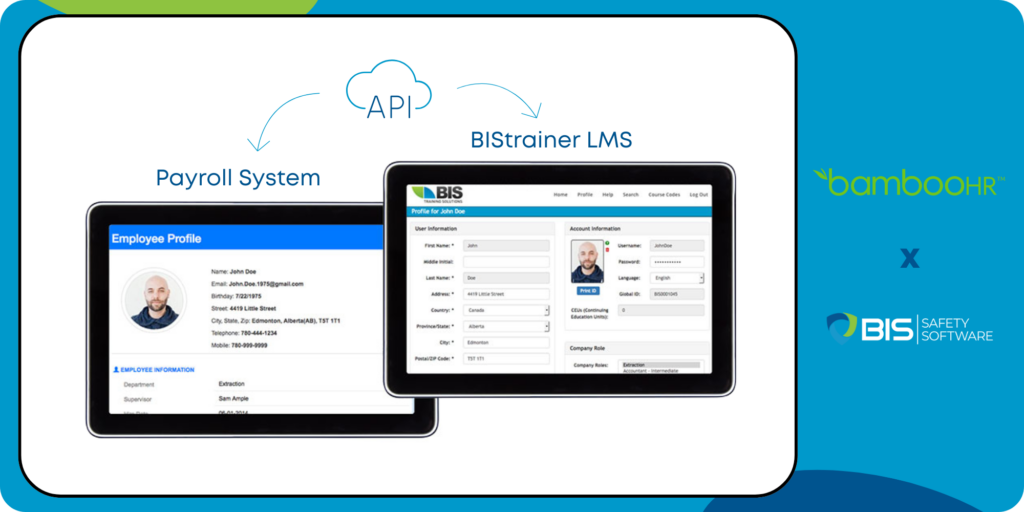
Home BambooHR & BIS Simplifying HR and Safety Management Together at last! March 20, 2025 By Divyanshu Jain Exciting news! BambooHR is now fully integrated with BIS Safety Software. Companies are already using BambooHR for hiring, onboarding, and employee management. Now they can seamlessly connect their HR data with safety training and compliance tracking. Eliminate double data entry, reduce errors, and save valuable time. For businesses that balance both HR and safety compliance, this integration means smoother workflows, better data accuracy. It means a stronger overall system for managing employees — from their first day to their next certification renewal. Why BambooHR? BambooHR is built for companies that want an easy, intuitive HR platform. It streamlines hiring, onboarding, time tracking, benefits, and performance management. But what it doesn’t handle natively is workplace safety training and compliance management—critical for industries with regulatory requirements. That’s where the integration with BIS Safety Software comes in. By linking BambooHR with BIS Safety Software, businesses can keep all employee information in sync. No more manual data entry. No more worrying about outdated records. Just one system, updated automatically, working together to keep HR and safety teams aligned. How Integration Works BambooHR’s integration is simple. BambooHR acts as the central hub for employee data. BIS Safety Software ensures that training records, certifications, and compliance details stay updated. Here’s how it works at a high level: 1. Automatic Data Sync When a new employee is added to BambooHR, their information is automatically pushed to BIS Safety Software—no need to enter the same details twice. 2. Training and Certification Tracking As employees complete training, their records update in BIS Safety Software and sync back to BambooHR. This ensures HR teams always have the latest compliance status. 3. Seamless Offboarding When an employee leaves, their records are removed from both systems, preventing outdated information from lingering and streamlining audits. 4. Real-Time Updates When a new employee is added to BambooHR, their information is automatically pushed to BIS Safety Software—no need to enter the same details twice. The result? A fully connected system where HR and safety management work hand in hand, making sure employees are trained, compliant, and always up to date. The Benefits for Customers For businesses juggling HR responsibilities and safety compliance, this integration is a game-changer. Here’s what it means in practice: ✔ No More Double Entry HR teams won’t have to enter employee data into two different systems. Save time and reduce the risk of errors. ✔ Always Up-to-Date Compliance Records When training or certifications expire, HR teams get real-time updates, preventing compliance gaps. ✔ Faster Onboarding New employees can be automatically assigned training based on their role. This ensures they meet safety requirements from day one. ✔ Better Workforce Insights With HR and safety data in one place, companies get a clearer picture of their workforce’s readiness and compliance. ✔ Simplified Audits When auditors come knocking, HR and safety teams can pull up accurate, real-time records in seconds—no scrambling, no searching. A Smarter Way to Manage HR and Safety The integration between BambooHR and BIS Safety Software brings together the best of both worlds. It keeps HR teams focused on people. It keeps safety teams focused on compliance. It keeps employees moving through their training and career milestones without friction. For companies looking to simplify their HR and safety processes, this is the kind of efficiency that makes a difference. Save time, reduce risk, and ensure a safer, more compliant workforce. One system, two essential functions—finally working together the way they should. BIS Social Media Follow BIS Safety Software for industry-leading safety updates, training solutions, and more. Hover over each icon for quick access to follow, share, or explore our other channels. Related Articles All Posts 360 Immersive Alberta safety courses awareness BambooHR integration biometric sensors BIS Safety Software black holes chemical chronic injuries community safety programs Compliance compliance courses compliance tools compliance vs protection Construction advocacy Construction education Construction industry construction safety training crane customized training daily trip inspection Danny Sellers data-driven safety digital forms driver file management driver training early intervention EHS Einstein emergency preparedness emergency supplies employee health employee safety employee training ergonomics exoskeletons fall protection field safety field safety services fire prevention first aid kit first week on the job fleet management gravitational waves hands-on training hazard communication hazard prevention heavy equipment safety high voltage systems HR automation HR software incident data incident reporting industrial safety injury prevention injury reporting injury response internal audits Jennifer Lastra job site hazards job site risks job site safety Jody Young KBR Safety Training Leadership leadership accountability LIGO LMS lone workers mental health at work MI Safety new workers Northern BC NRCA NSC Standard 13 occupational health occupational safety oil and gas safety onboarding safety Online safety training OSHA compliance OSHA standards overhead crane courses pain awareness physics careers pipeline safety PPE PPE enforcement pre-trip inspection pretrip inspection Professional development psychological safety risk management road safety Robin Postnikoff safety safety advice safety article safety best practices safety compliance safety culture safety innovation safety insights safety inspection safety leadership safety management safety management system safety myths safety systems safety technology safety theater safety tips safety training smart helmets space science supervisor training Total Recordable Injury Formula training training courses training matrix training record management transportation vehicle safety Virtual Reality VR Technology wearable technology WHMIS women in leadership work-alone training worker accountability worker protection worker safety workforce management workforce training workplace best practices workplace certification workplace hazards workplace health workplace injury prevention workplace risk management Workplace safety workplace wellness WSPS Pain Is a Warning: March 28, 2025 Home Pain Is a Warning: Why Ignoring Injuries Leads to Bigger Problems Why Ignoring Injuries Leads to Bigger Problems Lastra… Read More The Problem with Safety? March 27, 2025 Home The Problem with Safety? We Made It Boring. We Made It Boring Lastra talks psychology, VR, and AI in… Read More The First Week on the Job: March 27, 2025 Home The First Week on the Job: Why
The Seven Deadly Sins That Destroy Safety Culture

Home The Seven Deadly Sins That Destroy Safety Culture February 28, 2025 By Divyanshu Jain Even the strongest safety cultures can be dismantled by a few key missteps. These are the seven deadly sins that can erode safety standards, diminish trust, and put lives at risk. Understanding them is the first step in preventing their destructive impact. 1. Double Standards: One Rule for Some, Another for Others One of the fastest ways to destroy a safety culture is to enforce rules inconsistently. If leadership disregards safety policies while expecting employees to follow them, resentment and noncompliance will spread. Occupational Health and Safety Officer Ted Lane recalls, “I’ve seen situations where the sign on the shop door says ‘Safety glasses must be worn,’ but the boss walks in without them. If leadership doesn’t follow the rules, don’t expect anyone else to.” 2. Top-Down Directives Without Worker Input Safety policies that are dictated from the top down—without input from frontline workers—often fail. Employees who aren’t consulted see policies as bureaucratic red tape rather than measures designed to protect them. Sharon Cole, an OHS Consultant, advises, “If you’re writing a safety policy, involve the workers it will affect. They’re the ones on the frontlines, and their input makes policies practical and enforceable.” 3. Tolerating Negative Attitudes Toward Safety A single bad attitude can spread like wildfire. Workers who scoff at safety meetings, dismiss concerns, or ignore protocols undermine the organization’s culture. If their behavior is left unchecked, it signals that safety isn’t truly a priority. Ted Lane emphasizes, “Zero tolerance for bad safety performance is crucial. Whether it’s the boss’s son or your most experienced worker, if they refuse to comply with safety rules, they need to go.” 4. Shifting Priorities: Safety Takes a Back Seat Many companies claim safety is their top priority—until deadlines or costs are at stake. When safety is sacrificed for productivity, employees receive a clear message: safety only matters when it’s convenient. This erodes trust and encourages unsafe behaviors. 5. Failing to Lead by Example When supervisors and executives fail to embody the safety standards they expect from employees, it weakens the entire culture. A strong safety culture starts at the top and trickles down. Patrick Cantner, HSE Director of Willbros Canada, warns, “If you say, ‘Production done in the absence of safety will not be valued or rewarded,’ but then allow it to happen, you’ll destroy your safety culture.” 6. Punishing Workers for Reporting Issues If employees who report unsafe conditions or incidents are reprimanded instead of supported, they will stop coming forward. A culture of fear leads to underreporting, which increases risk. Marcia Minto, an OH&S Program Manager, states, “If someone reports an issue and is yelled at by management, they won’t come forward next time. Employees need to feel empowered, not afraid.” 7. Complacency: The Silent Killer Organizations that have gone a long time without an incident often become overconfident. Safety policies become lax, assumptions replace vigilance, and standards begin to slip. Over time, this complacency spreads, erasing years of hard work in building a safety culture. The moment an organization assumes it has ‘solved’ safety, it has already taken a step backward. Preventing the Seven Deadly Sins To maintain a strong safety culture, organizations must actively identify and counter these pitfalls. Leaders must lead by example, workers must feel empowered to participate, and safety must be a genuine, unwavering priority. The key takeaway? Building a safety culture is difficult, but destroying one is easy. Organizations must remain vigilant to ensure safety is not just a policy, but a deeply ingrained part of workplace operations. BIS Social Media Follow BIS Safety Software for industry-leading safety updates, training solutions, and more. Hover over each icon for quick access to follow, share, or explore our other channels. Related Articles All Posts 360 Immersive Alberta safety courses awareness BambooHR integration biometric sensors BIS Safety Software black holes chemical chronic injuries community safety programs Compliance compliance courses compliance tools compliance vs protection Construction advocacy Construction education Construction industry construction safety training crane customized training daily trip inspection Danny Sellers data-driven safety digital forms driver file management driver training early intervention EHS Einstein emergency preparedness emergency supplies employee health employee safety employee training ergonomics exoskeletons fall protection field safety field safety services fire prevention first aid kit first week on the job fleet management gravitational waves hands-on training hazard communication hazard prevention heavy equipment safety high voltage systems HR automation HR software incident data incident reporting industrial safety injury prevention injury reporting injury response internal audits Jennifer Lastra job site hazards job site risks job site safety Jody Young KBR Safety Training Leadership leadership accountability LIGO LMS lone workers mental health at work MI Safety new workers Northern BC NRCA NSC Standard 13 occupational health occupational safety oil and gas safety onboarding safety Online safety training OSHA compliance OSHA standards overhead crane courses pain awareness physics careers pipeline safety PPE PPE enforcement pre-trip inspection pretrip inspection Professional development psychological safety risk management road safety Robin Postnikoff safety safety advice safety article safety best practices safety compliance safety culture safety innovation safety insights safety inspection safety leadership safety management safety management system safety myths safety systems safety technology safety theater safety tips safety training smart helmets space science supervisor training Total Recordable Injury Formula training training courses training matrix training record management transportation vehicle safety Virtual Reality VR Technology wearable technology WHMIS women in leadership work-alone training worker accountability worker protection worker safety workforce management workforce training workplace best practices workplace certification workplace hazards workplace health workplace injury prevention workplace risk management Workplace safety workplace wellness WSPS Would You Pass a Surprise Safety Inspection? April 1, 2025 Home Would You Pass a Surprise Safety Inspection? Here’s What Inspectors Look For April 1, 2025 By Shilpa Sharma A… Read More The PPE Excuse April 1, 2025 Home The PPE Excuse: Why Workers Skip It and How to Change That April 1, 2025 By Shilpa Sharma Facebook… Read More Pain Is a
10 Tips for Building a Strong Safety Culture

Home Building a Strong Safety Culture Keep safety practical and punchy! February 28, 2025 By Divyanshu Jain Creating a strong safety culture takes effort, but the rewards—fewer injuries, lower costs, and a more engaged workforce—are well worth it. Organizations that successfully build a culture of safety don’t just reduce accidents; they improve morale, efficiency, and even profitability. Here are ten essential strategies to strengthen workplace safety: 1. Be Willing to Make Sacrifices Transforming a weak safety culture into a strong one isn’t always easy. It requires hard decisions and, in some cases, a willingness to part ways with employees who refuse to comply. Ted Lane, an Occupational Health and Safety Officer, recalls a major Alberta construction company that implemented a zero-tolerance safety policy. Initially, they lost workers who resisted the new approach, but within a few years, they rebuilt with employees who valued safety. The result? A safer, more efficient, and ultimately more profitable company. 2. Engage Employees in Safety Decisions Many safety policies fail because they are imposed without input from the employees they affect. Workers on the frontlines know the risks better than anyone else, so including them in safety discussions leads to more practical, effective solutions. “We promote the guys to do some of the things in their own way,” says Darryl Chipman, Director for CASCA. “Recently, a worker suggested using pictures instead of a long written form for safety reports. It made things easier, faster, and more effective.” 3. Encourage Candor and Open Communication Employees need to feel safe speaking up about unsafe conditions or behaviors. In organizations with strong safety cultures, workers are encouraged—not punished— for raising concerns. Ted Lane has a unique way of testing this: “I’ll walk into a site missing a piece of safety gear. If a worker stops me and says, ‘Hey, get that fixed,’ I know that company’s culture is working.” 4. Lead by Example Leadership must consistently demonstrate their commitment to safety. When managers follow safety protocols, employees are far more likely to do the same. Patrick Cantner, HSE Director of Willbros Canada, advises, “If you say safety comes first, but then reward employees who cut corners to meet deadlines, your safety culture will collapse.” 5. Promote Transparency An open approach to safety builds trust and accountability. Some companies publicly share their safety records and improvement efforts to reinforce the importance of workplace safety. Kinder Morgan sets a high standard by posting safety reports—including injury rates and incidents—on its public website. This level of transparency keeps employees and leadership accountable. 6. Empower Employees to Act Workers must feel confident in stopping unsafe work without fear of retaliation. When employees know they have the authority to halt operations for safety concerns, they become active participants in maintaining a secure workplace. “Our control center operators don’t need approval to shut down a pipeline if they feel there’s an unsafe condition,” says Dan Carter, Director of the Central Region & Control Centre for Kinder Morgan. “That’s built into our procedures.” 7. Make Safety Personal People are more likely to follow safety procedures if they understand the personal impact. Sharon Cole, OHS Consultant for Alberta Gaming and Liquor Corporation, changed a skeptical worker’s attitude by asking him to imagine how he’d feel if his best friend got hurt on the job because he didn’t speak up. That moment of personal connection turned him into one of the most safety-conscious employees on the site. 8. Keep Safety Communication Frequent Safety isn’t a one-time conversation—it’s an ongoing discussion. Monthly safety updates, toolbox talks, and bulletin boards help reinforce key messages. Adam Czarnecki, Human Resource Manager for Great West Kenworth, recommends using statistics to keep employees engaged: “Send out reports on injury trends. Show workers the progress being made.” 9. Recognize and Reward Safe Behavior Positive reinforcement plays a critical role in fostering safety. However, rewards should focus on long-term commitment rather than quick incentives that might encourage underreporting of incidents. Chipman explains, “We offer training and career advancement to employees who prioritize safety. When new safety positions open, we promote from within.” 10. Start With Yourself Safety culture begins with individuals taking personal responsibility. It’s easy to point fingers at management or coworkers, but real change starts when every employee commits to prioritizing safety in their own work. The Real Bottom Line When safety is embedded in an organization’s culture, it doesn’t just prevent accidents—it improves efficiency, morale, and trust. Strong safety cultures don’t develop overnight, but with commitment, consistency, and leadership, they become an essential part of the workplace. The key takeaway? Safety isn’t just a policy—it’s a mindset, and it starts with you. BIS Social Media Follow BIS Safety Software for industry-leading safety updates, training solutions, and more. Hover over each icon for quick access to follow, share, or explore our other channels. Related Articles All Posts 360 Immersive Alberta safety courses awareness BambooHR integration biometric sensors BIS Safety Software black holes chemical chronic injuries community safety programs Compliance compliance courses compliance tools compliance vs protection Construction advocacy Construction education Construction industry construction safety training crane customized training daily trip inspection Danny Sellers data-driven safety digital forms driver file management driver training early intervention EHS Einstein emergency preparedness emergency supplies employee health employee safety employee training ergonomics exoskeletons fall protection field safety field safety services fire prevention first aid kit first week on the job fleet management gravitational waves hands-on training hazard communication hazard prevention heavy equipment safety high voltage systems HR automation HR software incident data incident reporting industrial safety injury prevention injury reporting injury response internal audits Jennifer Lastra job site hazards job site risks job site safety Jody Young KBR Safety Training Leadership leadership accountability LIGO LMS lone workers mental health at work MI Safety new workers Northern BC NRCA NSC Standard 13 occupational health occupational safety oil and gas safety onboarding safety Online safety training OSHA compliance OSHA standards overhead crane courses pain awareness physics careers pipeline safety PPE PPE enforcement pre-trip inspection pretrip inspection Professional development psychological


